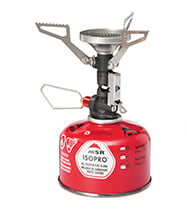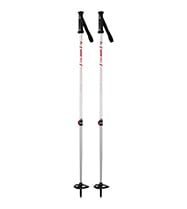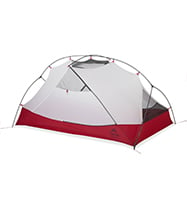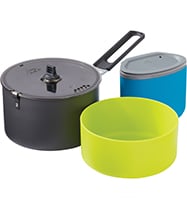How to Pack a Backpack
Correctly packing a backpacking pack is one of those skills you don’t know is a skill until you’re walking down the trail with something jamming painfully into the small of your pack. Then you need to treat some water and realize your filter is at the bottom of the bag. Suddenly it starts to rain and where did you put that dang pack cover?
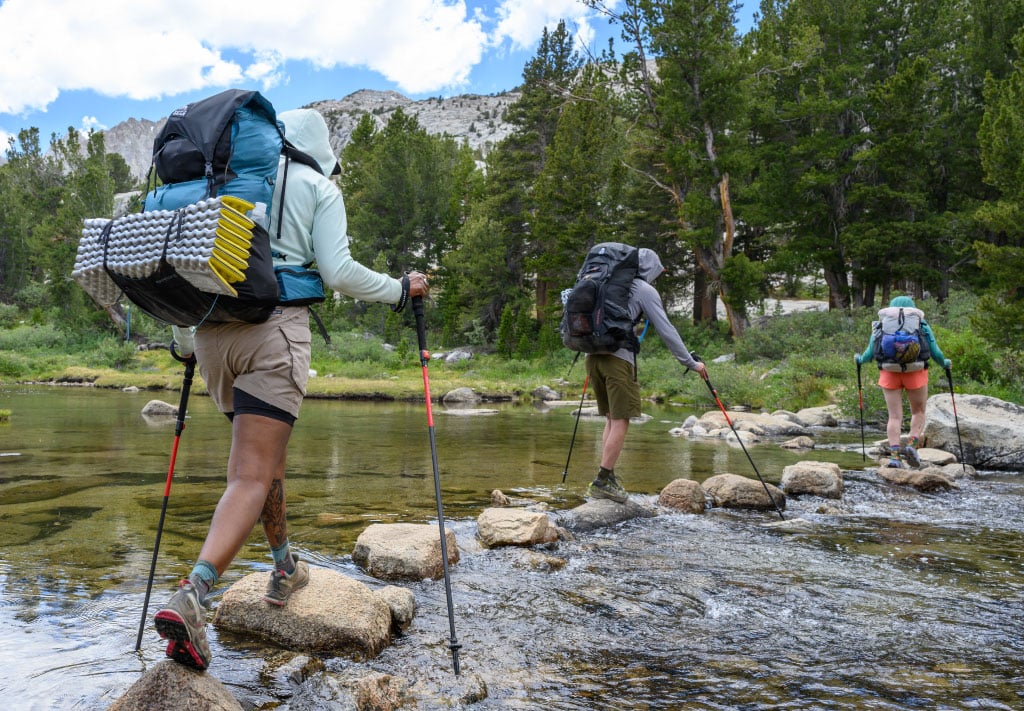
A little mindfulness when packing will go miles in keeping you happy and comfortable on the trail. Fortunately, once you have the info it’s easy to do. Read on to become a packing ninja.
If you are just starting out with backpacking, you should also take some time to become familiar with Leave No Trace practices, like how to wash dishes in the backcountry and packing out your toilet paper and waste (yes, really), so you leave the places you visit as beautiful as you found them.
Table of Contents
- Choosing a Backpack
- Match Your Gear to Your Trip
- Pack That Bag (Or, How to Make It All Fit!)
- Packing Systems, Tricky Items & Other Tips
- Waterproofing Your Pack
- How to Pick Up a Heavy Pack
- Backpacking Gear Packing Checklist
- How to Pack a Backpack Cheat Sheet
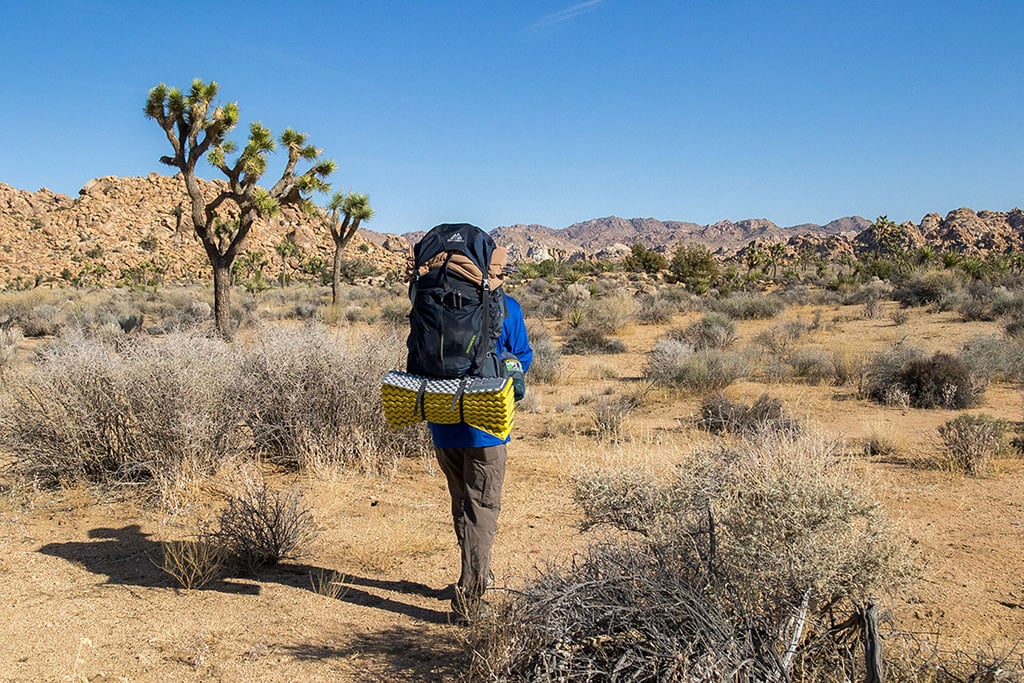
Choosing a Backpack
There are two key factors in choosing a backpacking pack: volume and fit. If you already own a backpack you’re happy with, feel free to skip this step. But if you need a little help choosing the right backpack for your adventures, keep reading. Note: we are only addressing internal frame packs in this article as they are the overwhelmingly popular choice for most backpackers today. External frame aficionados will have to look elsewhere.
Volume
The volume of your pack has to be big enough to hold all of your gear, but not so large that you’re carrying unnecessary weight. Backpacking bags are measured in liters and for overnight trips, you’ll need something in the 40- to 70-liter range. The right volume for you will depend on your gear style (ultralight setups take up less space than more traditional gear), and on the types of trips you prefer. Are you only going out for one night at a time? Or do you go on weeklong treks where you’re carrying a lot of food? Will you ever have to carry a bear can? Any snow camping? If the answer is yes, you’ll need a bit more space.
For the average backpacker, 45-65 liters is ideal for most trips. These packs weigh anywhere from one to five pounds, depending on whether you want something minimalist (read: no padding, less pockets) or cushy and full-featured. The more minimal the pack, the more important it is to pack correctly; cushier bags are more forgiving and keep items from pressing into your back as easily. Two to three pounds is a good range for most people, offering a balance of weight and features.
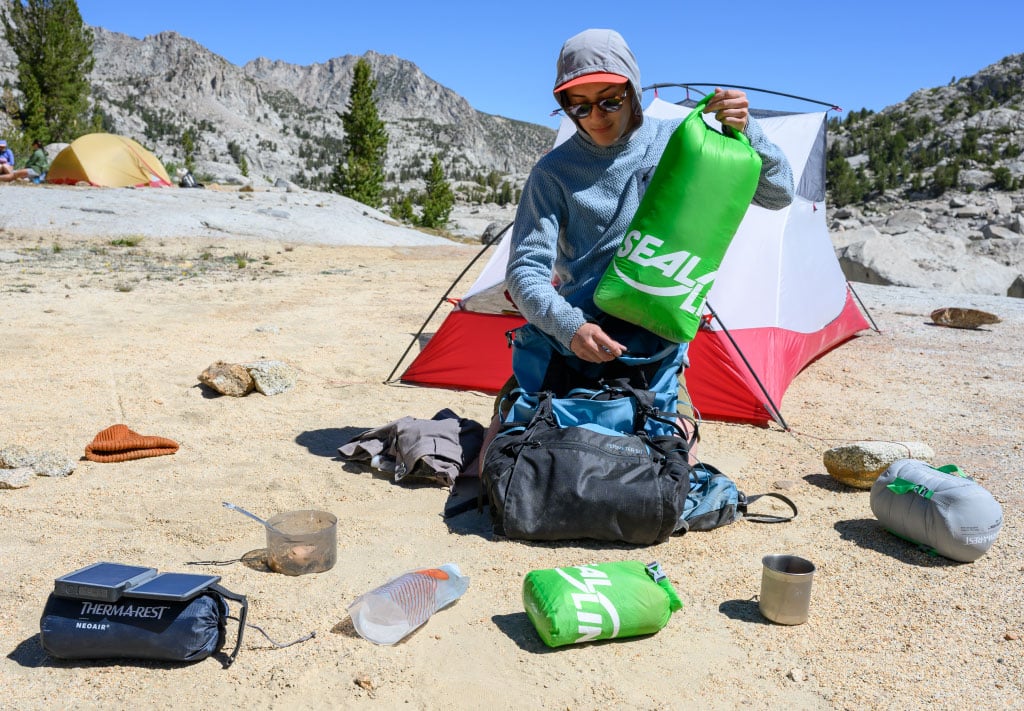
Fit
A backpacking pack is only as good as it is comfortable to wear, and that starts with a proper fit. Most packs come in two or three sizes, which indicate the length of the pack where it fits your back. It is recommended that you visit your local outdoor store to be measured by a professional, but if you want to try it yourself here’s a video on how to do it. Always make sure to check different brands’ sizing, as they don’t all follow a consistent system.
The store employees can also teach you how to properly adjust your pack straps, which is critical in assessing fit. Here’s how to do it yourself:
- Always clip and adjust your hip belt first. The top of your hip bone should rest squarely in the middle of the waistbelt—80% of the pack’s weight will rest on your hips.
- Tighten the shoulder straps by grabbing the strap tails below your armpits and pulling them down and away. The shoulder straps should feel comfortable against your body, with no gaps above your shoulders. Don’t over-tighten though, or you will shift too much weight from your hips to your shoulders and they will start to ache quickly.
- Adjust the load-lifter straps, which run from the top of the pack to the shoulder straps. They should sit at about a 45˚ angle.
- Clip and adjust the sternum strap, which should sit about one inch below your collarbone. Give it just enough tension to sit smooth and flat across your body, but no tighter or it could restrict breathing.
Ideally, you can try on a few different packs with weight and wear them around the store for a while. Make sure to note any spots that regularly rub against your body—they could become hot spots over time.
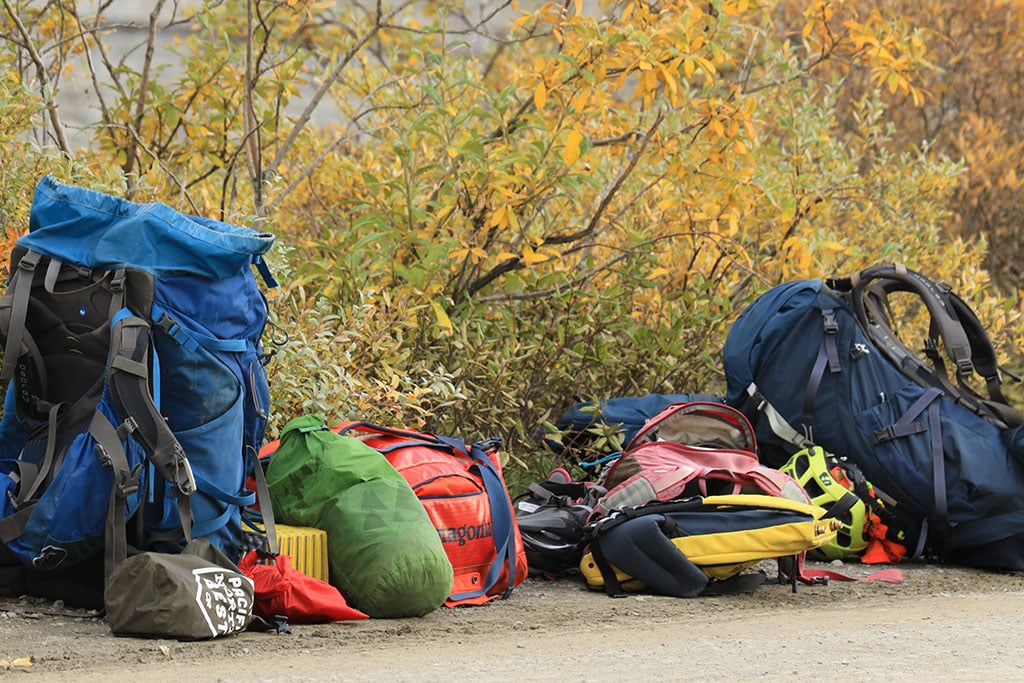
Assembling Gear for Your Trip
The season and location of your trip are the two most important elements in determining what gear to bring. If you’re headed out in the peak of summer to a location where you know the temperature won’t dip below 50 degrees Fahrenheit or so, you can get away with an ultralight sleeping bag or quilt and less warm clothing. But if your trip is in a shoulder season or you’re going up to elevations where the weather is less predictable, you need gear that will withstand the elements and keep you warm and dry.
Generally, the length of your trip only affects how much food you need to carry; the gear list stays the same (no, you don’t need a new outfit for each day). If you’re heading out for a week or more, you may have to choose a larger pack to accommodate the amount of food you need. Most sources recommend packing 2-2.5 pounds of food per person per day for an average backpacking trip. Make sure you choose calorie-dense options to fuel your body. Learn more about choosing backpacking food here.
Backpacking with a group can make packing easier because you can share the load. Assuming you are sharing a stove, tent and/or water treatment, these items can be split between hikers to lighten everyone’s packs. However, make sure you stay together or that everyone has a backup water treatment option like tablets in case someone gets lost and needs to treat their own water.
A complete gear checklist is provided at the bottom of this article. Before starting to pack, lay out all your gear so you can visually check that you have everything you need, including food for each day.
How to Pack a Backpack (How to Make It All Fit!)
When packing a backpack, weight distribution is the name of the game. The bag itself can be broken out into different zones that help determine where to pack gear. Essentially, you want the heaviest items close to your mid-back for a stable center of gravity, and any items you need while you’re actively hiking to be easily accessible.
A properly balanced bag can actually make you safer while hiking. If you lose your balance, a poorly backed bag can pull you down, whereas a well-packed one can help maintain your center of gravity.
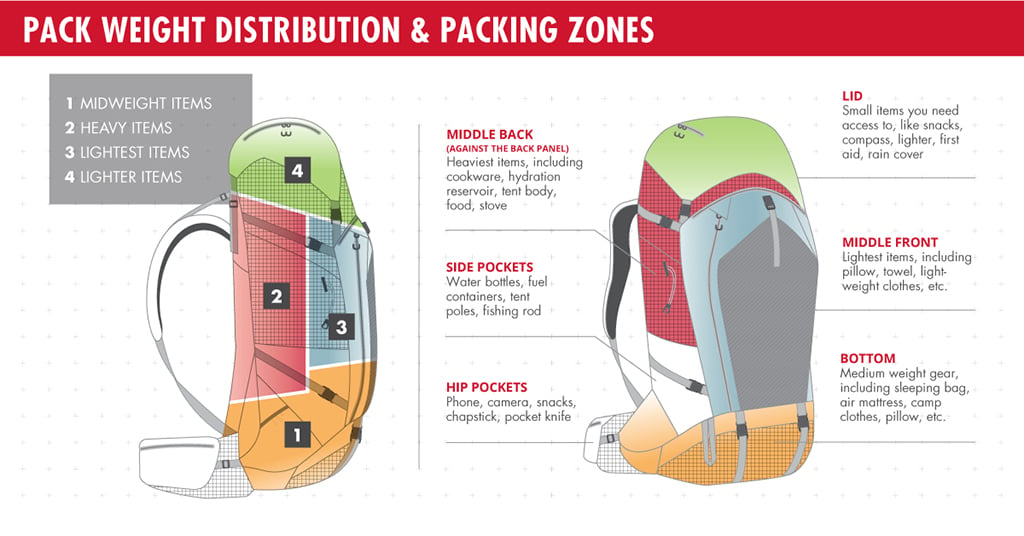
As you can see in the above diagram, there are four internal weight zones, listed in order of how they are packed:
- Bottom – Midweight items
- Middle back – Heaviest items
- Front – Lightest items
- Top – Lighter items that you may need access to quickly
Pro Tip: Make sure all your pack’s compression straps are as loose as possible before you start packing.
Internal Packing Zones
Zone 1: The Bottom
The bottom of your pack is the place to stuff your bulky midweight items. Start with your sleeping bag, which essentially forms a base for the rest of your gear to sit on inside the pack. Most people pack their sleeping bags in waterproof stuff sacks, but some choose to simply stuff a loose sleeping bag into the bottom of the pack to fill the space. Depending on the size of your sleeping pad, you can stuff that next to your sleeping bag. Use your camp clothes and pillow (if you carry one) to fill in any open space.
Some packs have a dedicated sleeping bag compartment at the bottom, with zipper access and a detachable sling to hold gear above the sleeping bag. If you need extra space in your pack, don’t use the sling.
Zone 2: The Middle Back
The middle back of your pack, the area closest to the center of your back, is where all your heaviest gear should sit. This will be your pack’s center of gravity, which helps keep it stable against your body while you walk versus swinging around and throwing you off balance. Gear to place here includes the tent body (and poles if they fit), cookware, a stove, fuel and food you don’t need until camp.
Make sure you’re using all available space, which includes the inside of your cookware. Many pots can hold a fuel canister and even a small stove (learn which MSR cookware and stoves fit together here).
The middle back is also where your pack is designed to hold a hydration reservoir because water is one of the heaviest essentials you carry (one liter weighs 2.2 pounds, or 1,000 grams).
Pro Tip: Fill your reservoir and place it in your pack before any of your other gear; it will be nearly impossible to do once your pack is full. Most packs have a small opening on one or both sides of the shoulder straps for the hose to exit and hook onto your preferred shoulder strap.
Zone 3: The Front
Because it’s the area the furthest away from your body, the front of the pack is where your lightest gear should live. Lightweight clothes, a camp towel and small toiletries can all fill out extra space around the heavy items against your back. You can also use clothes to provide insulation around hard items or gear that might shift around.
Zone 4: The Top
The top of your pack includes both the inside top of the main pack and the lid, also known as the pack’s brain. Everything in this zone should be lighter weight to keep your pack from being top-heavy. These should also be items that you need easy access to, like first aid, a water filter (if it’s larger, otherwise keep it in an outside pocket), snacks, a compass, sunscreen, a rain jacket, etc, so that you don’t have to unpack your whole bag every time you need something.
Pro Tip: If you have a bulky, lightweight item like a foam sleeping pad that doesn’t easily fit inside your pack, you can use the space between the lid and the pack body to sandwich it in place. Simply loosen the straps that connect the lid to the pack, slide the pad between the two and tighten the straps until it is secure. If you have an ultralight tent this is a good place for it, but don’t try it with tents that weigh more than 24 ounces or so, to maintain a proper center of gravity.
Additional Packing Areas
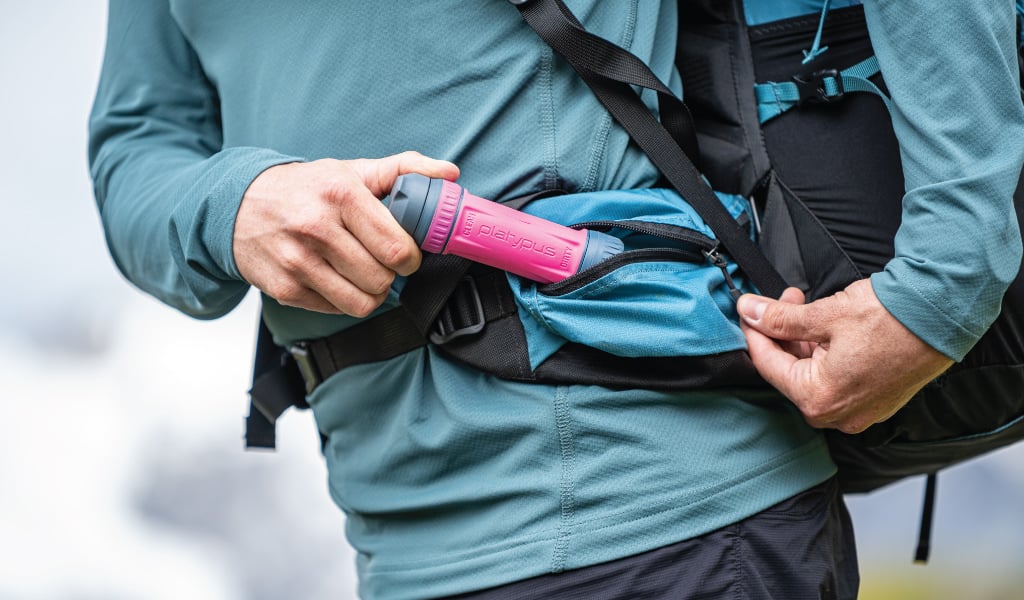
Hip Belt Pockets
Most packs come with handy pockets on the hip belt. This is the perfect place to keep small items you need regular access to, like an energy bar, lip balm, a small pocket knife or your phone or camera.
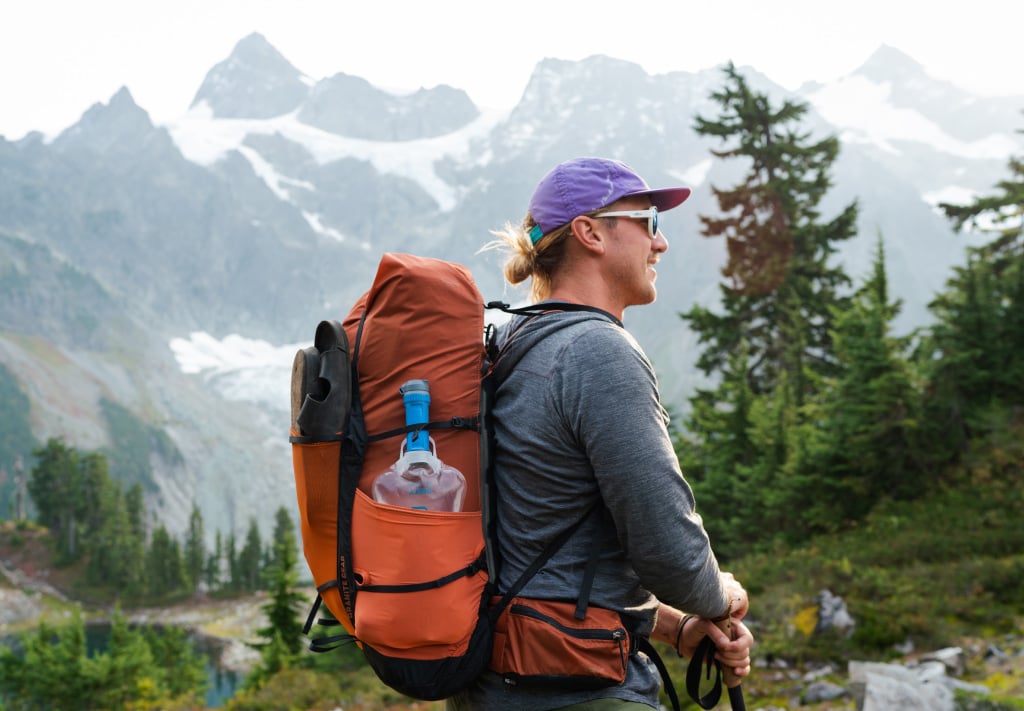
Side Pockets
Depending on the pack, your bag may have two or four side pockets. They are generally used for water bottles and can be reached without taking off your pack, depending on the bag and how flexible you are (ask a friend for help!). They are also great for managing tent poles or fishing rods (use some of the bag’s compression straps to secure the top of the poles).
Front Pouch
Nearly all backpacks have a stretchy front pouch, often called a kangaroo pocket, that expands to hold lightweight essentials you need to be able to grab quickly. These include a rain cover, bathroom kit (small trowel, toilet paper, hand sanitizer and pack-out baggies), a water filter (if it’s small, otherwise store it in the top of your pack), bandana, and even a rain jacket if there’s still room. Some are stretchy enough to store crunchable snacks like a bag of chips without causing too much damage.
Loops and Cinch Cords
Some packs come with loops and elastic cinches to help manage extra gear. Some are specifically designed to hold things like trekking poles when you don’t want to use them; others are there for you to get creative. Try not to have too much extra stuff dangling off your pack though—hanging items can catch on tree branches and just generally feel (and sound) annoying.
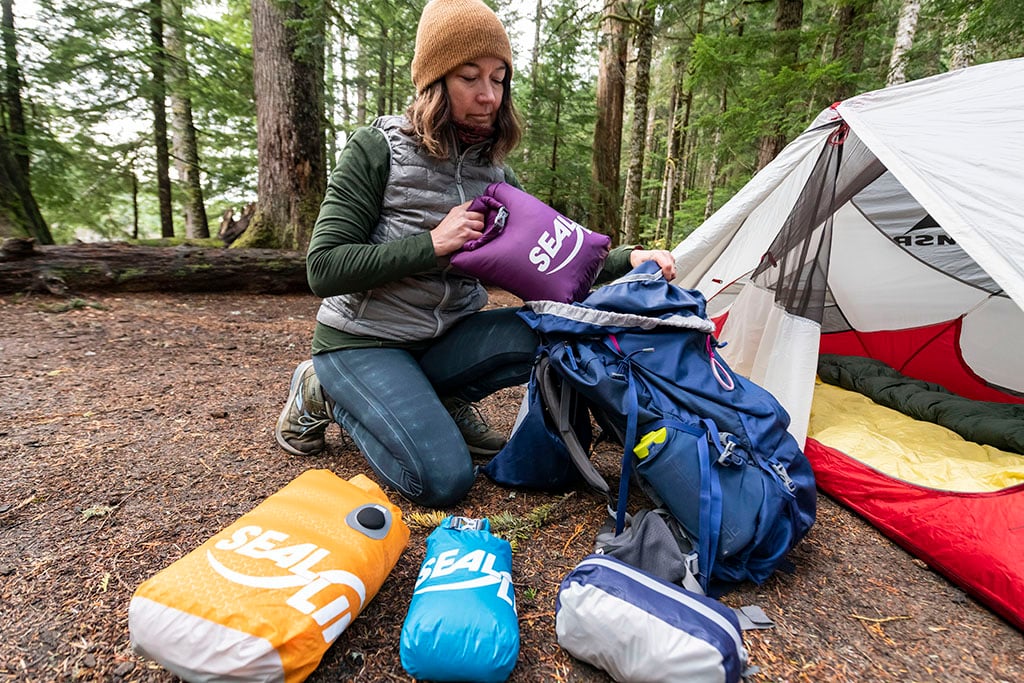
Pro Tip: Hook a few safety pins to some of your pack loops—they are perfect for hanging drying socks while you hike.
Packing Systems, Tricky Items and Other Tips
Packing Systems
Packing systems (aka using stuff sacks and other organizational tools) are entirely personal preference and something you will refine over time. Some people prefer not to take the extra weight, others like knowing there’s a bag for everything. Small ditty bags in different colors are useful for holding toiletries, snacks and first aid, so you always know which bag to grab depending on what you need.
It can be a good idea to pack certain items in waterproof stuff sacks, like your sleeping bag and any electronics that could get moisture damage. If you’re really trying to maximize the space in your pack, compression stuff sacks can also be helpful for squishing everything as small as possible, including clothes and sleeping bags. The oblong shape of stuff sacks can create ‘dead space’ in your pack, however, so try packing a few different ways to determine what works best for you.
Odor-proof bags are a good option to hold all your food and ‘smellables’ like toothpaste—even if you’re not in bear country, small rodents can and will chew through your gear to get your tasty snacks if they can smell them.
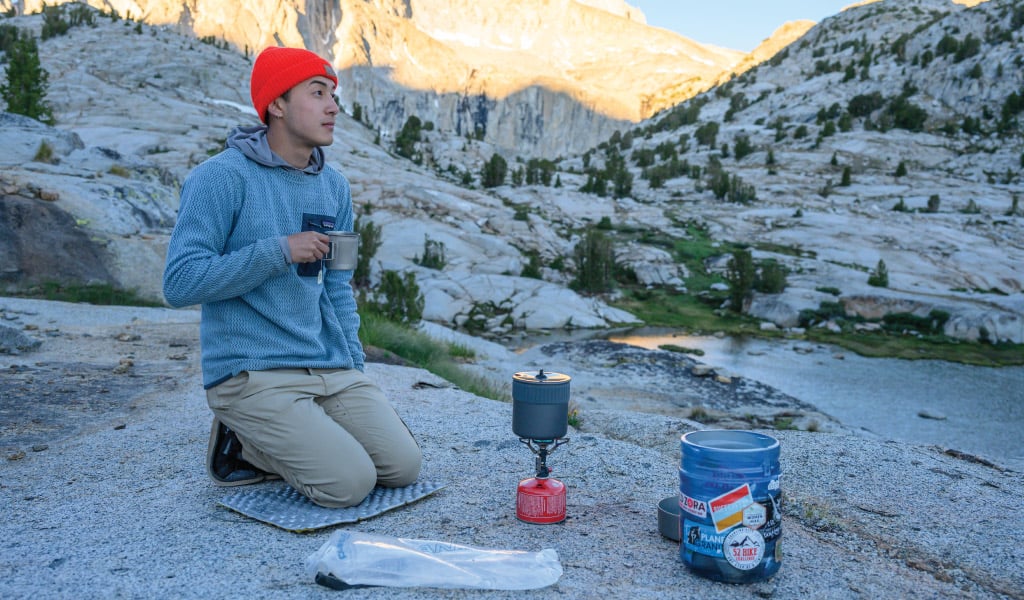
Bear Cans
Speaking of bears, some national and state parks, forests and wilderness areas require anyone staying overnight to carry bearproof food protection. This protects the bears as much as it does backpackers—no one wants to see a bear destroyed because it got into your energy chews. Always check with the local rangers to ensure you’re following the requirements for the area you’re visiting.
The trouble with bulky, hard-sided bear cans is that they can be tough to pack. Generally, the best way is to place them vertically on top of your sleeping bag so they sit at your middle back where the heaviest items go. Make sure to pack the can itself full so you’re using all the available space. Use soft items like clothes to pack around where the can hits the back frame, otherwise, it could press uncomfortably into your back.
Lighter, easier-to-pack soft-sided bearproof bags do exist, but they’re not permitted everywhere. Again, check with the local authorities to see what is permitted.
Winter Additions
Winter camping adds a few extra layers of preparation to backpacking. Your shelter and sleep system will get heavier because you’ll need warmer gear. You will also need more warm clothing layers, more food and more fuel. Your body will burn more calories as it works to keep you warm, so more food is needed to fuel your body’s furnace. You may also need a burlier stove that performs well in freezing conditions. All of these items take up more space and may require a larger pack.
Liquid Fuel
Most backpackers carry canister stoves for their ease of use and low weight. But some still carry liquid fuel stoves, preferring them for their easy in-field maintenance and all-weather performance. If you fall into the latter camp, make sure to store your liquid fuel bottles vertically (water bottle pockets are great for this), and keep them away from your food in case of spills.
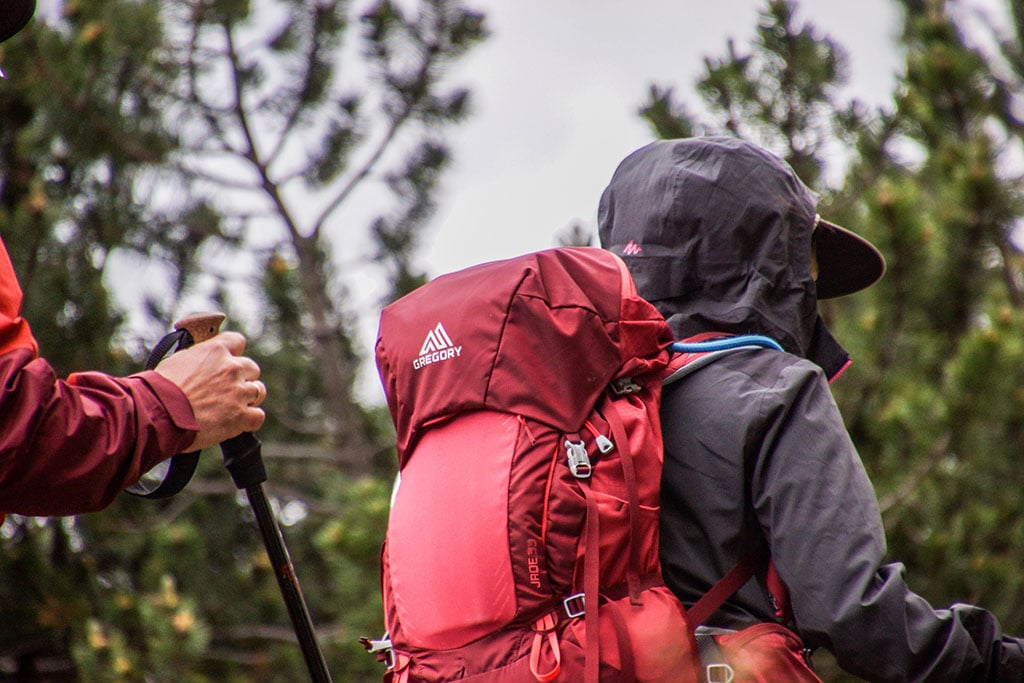
Waterproofing Your Pack
You carry a rain jacket for yourself—your pack needs protection from the elements too. The most common option is a waterproof rain cover that goes around the outside of your pack and cinches around the back panel with a cord. Most brands sell their own version—make sure to buy the right size for your pack volume. Some packs even come with a rain cover included.
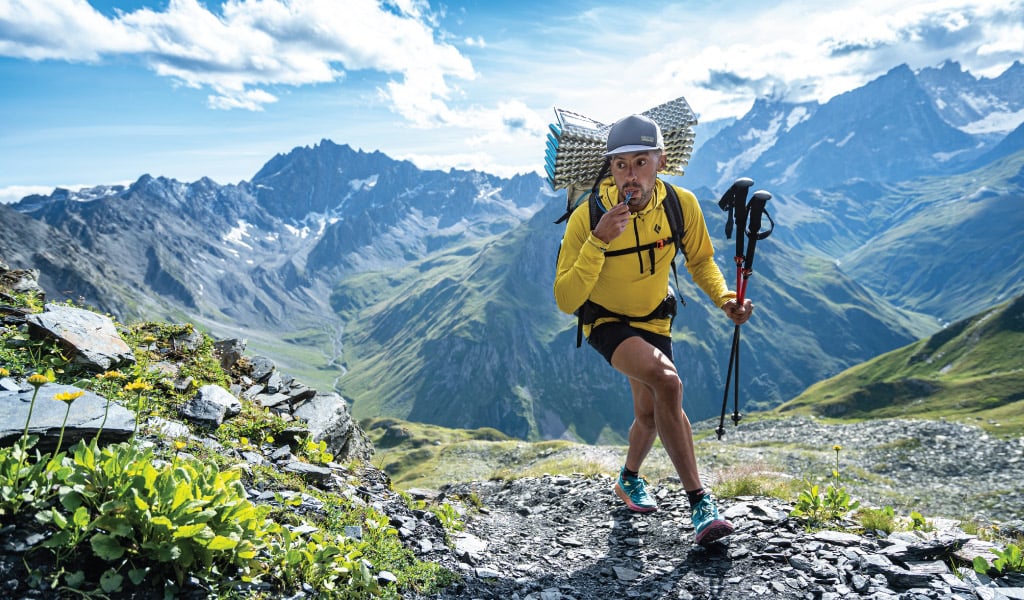
The other option, which can be combined with a pack cover for extra protection, is to line the inside of your pack with a heavy-duty trash compactor bag. These bags are thicker than a regular trash bag and are perfect for keeping water off the gear inside your pack, particularly when you set your bag on wet ground. Since they are light and cheap, compactor bags are great for those trips when the forecast says sunny but you want to be prepared just in case (always a good idea in the mountains).
How to Put on a Full Pack
It may seem silly to provide advice on how to put a backpack on—until you’ve tried to lift a fully loaded pack onto your back. There’s a right and wrong way to do it. Here’s how:
- Make sure all the pack’s compression straps are tightened. Loosen the shoulder straps slightly (this will make it easier to slip the straps on).
- Grab the haul loop at the top of the back panel (between the shoulder straps) and, using your core and legs, lift the pack onto one thigh with the shoulder straps facing you.
- Put the other arm through a shoulder strap and shift the pack until the padding touches your shoulder.
- Lean forward and ease the pack fully onto your back. Slide your arm through the other shoulder strap.
- Buckle the hip belt first, then adjust all the straps as needed.
Backpacking Gear Checklist
The 10 Essentials (originally developed in the 1930s by the Seattle organization The Mountaineers):
- Shelter: Tent, tarp or bivy
- Navigation: GPS unit, compass and paper map (don’t rely exclusively on anything with batteries)
- Hydration: Water treatment, water bottles and/or reservoir, backup treatment (like tablets)
- Fire: Lighter/matches, stove and fuel
- Food: About 2-2.5 pounds/day plus some emergency rations
- First aid kit: Pain/inflammation medication, disinfectant wipes, tape/bandages, blister care, insect repellent, etc.
- Headlamp and extra batteries
- Sun protection: Sunscreen, lip balm, sunglasses and hat
- Pocket knife
- Extra clothes/layering system: Rain jacket, insulated jacket, long underwear top and bottom, extra socks and underwear, warm hat and gloves
Other Essentials:
- Backpack
- Sleep system: Sleeping bag or quilt, sleeping pad
- Cookware and utensils
- Rain cover and/or waterproof pack liner
- Bandana
- Toiletries: Toothbrush, toothpaste, wet wipes, biodegradable soap
- Gear repair kit
- Bathroom kit (lightweight trowel, toilet paper, hand sanitizer and pack-out baggies)
Luxury Items
- Camp pillow
- Battery pack
- Book/E-reader
- Camp chair
- Camera
Location-Dependent/Seasonal Items:
- Bear can
- Fleece jacket
- Rain pants
- Insulated pants
- Wind shirt/pants
- Camp sandals/shoes
- Insulated booties
- Sleeping bag liner
- Personal towel
On Your Body:
- Hiking shirt: Wicking wool or synthetic, never cotton
- Hiking bottoms: Fast-drying convertible pants, shorts, skirt or kilt
- Hiking socks
- Hiking boots or trail runners
- Wicking underwear
- Sports bra
- Hat
- Sunglasses
- Trekking poles
- Trail gaiters (optional)
How to Pack a Backpack Cheat Sheet
- Lay out all your gear, adapted to your trip (use the checklist so you don’t forget anything).
- Make sure all pack compression straps are as loose as possible.
- Fill your hydration reservoir and place it in your pack.
- Stuff your sleeping bag in the bottom of your bag. Fill out extra space with a small sleeping pad, camp clothes and/or a camp pillow.
- Layer your heaviest gear against the back of the pack, including camp food, your cook system and tent body.
- Fill out the body of the pack with the lightest items, including lightweight clothes, camp towel or light toiletry items.
- Put lighter items on the top of your pack and in the lid that you may need access to while you’re hiking, including first aid, snacks, a rain jacket, sunscreen etc.
- Fill out your pockets with water bottles, tent poles, snacks, pack cover, bathroom kit and other lightweight items you’ll want to grab quickly.
- Cinch down pack compression straps to secure your load.
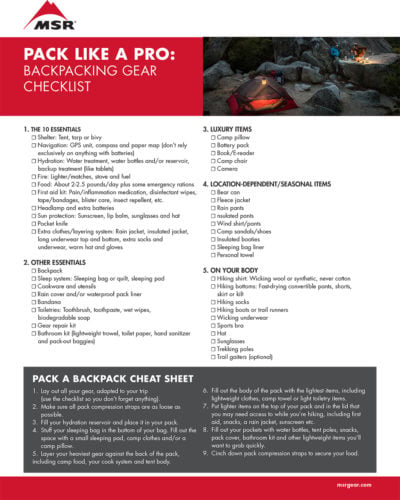
Download Backpacking Gear Checklist & Packing Cheat Sheet
Related Posts:
- Backpacking Cookware: Making It All Fit in Your Pack
- Your Pre-Season Backpacking Gear Checklist
- Cutting Backpacking Food Weight on a Long-Distance Hike
Updated. Originally Published June 15, 2021.
 Ashley Brown
Ashley Brown

